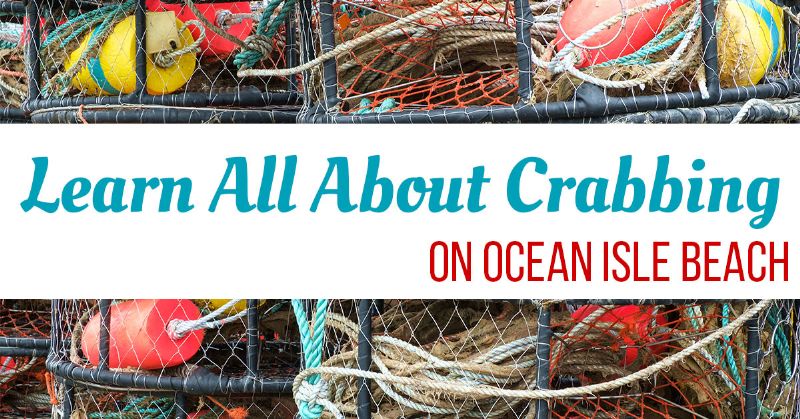
The Rules
Before you start crabbing, you’ll need to check with the North Carolina Wildlife Resources Commission to check whether or not you’ll need a North Carolina Fishing License. Most local bait shops will sell any licenses you need, or you can purchase them online prior to arriving. The good news is you likely won’t need a license.
Individuals who crab via chicken-necking do not need a
Also, a license is not required to use collapsible crab traps as long as the following conditionsare met. The largest open dimension cannotbe larger than 18 inches, and the traps must be designed to collapse at all times when in the water, except when they are being retrieved from or lowered to the bottom.
All recreational crabbers must follow the latest prescribed catch limits, which at the time of this blog are 50 crabs per day per person or 100 per vessel. All crabs must be 5 inches in minimum size for males and immature females. To measure a crab, measure from the tip to tip of the carapace. It is illegal for recreational crabbers to sell their catch.
What You’ll Need
 The equipment needed for crabbing is simple and cheap, which makes it a great activity for the beach. You’ll need a long cord of fishing line or twine, about 15ft – 20ft long. Crab
The equipment needed for crabbing is simple and cheap, which makes it a great activity for the beach. You’ll need a long cord of fishing line or twine, about 15ft – 20ft long. Crab
Now it’s time to get a little
Tie your bait to one end of the fishing line and toss it into the water. You can hold onto the other end, or tie it to a dock post or fishing pole holder. Make sure there is some slack on the line so it’s easy to detect movement. Then simply wait. As soon as the line starts to tighten, it’s a sure sign that there is a crab at the other end, enjoying the bait.
The key to a successful day of crabbing is to be patient. The trick is… once you feel a tug on the line, to slowly reel in the line without disturbing the crab on the other end. The crab is essentially chewing on the bait. Since there is no hook, you need to be smooth when you reel in the line. A small fishing net is helpful to have. Once you have the crab within reach of the net, simply scoop the crab up.
Where to Go Crabbing
Now that you have all the equipment you need, and you know the rules… you’ll need to find the perfect spot to go crabbing.
The first thing you need to know about picking a spot is to avoid the ocean. It sounds counterintuitive, but the ocean’s waves and strong currents make recreational crabbing unproductive. Instead, you need to look for calmer waters.
Look for a secluded sound or canal front location to wet your line. The Intracoastal Waterway is perfect for this. Whether from shore or the back of a boat, the ICW is ideal for crabbing. Of course, if you have chosen one of our many canal front homes you can simply hang a line right from your back door.
When looking for a spot along a canal, look for an area with water that is about 2 to 6 feet deep. This is the ideal depth for crabbing.
Crab move around. In fact, they are like buzzards and eat just about anything. They are constantly on the move looking for sources of food. Make sure to stop in one of the local bait shops to get the latest hot spots. The friendly locals on Ocean Isle Beach will be happy to tell you the best places to have a successful day of crabbing.

Best Simple Crab Cake Recipe You’ll Love



